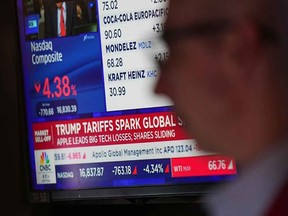Kevin Carmichael: It feels like Canada is entering a new phase of persistently strong demand for workers
Article content
Canada’s red-hot labour market cooled a little in June. It’s now only historically hot. Here’s what you need to know:
Advertisement 2
Article content
New paradigm
Once the big brains at the Bank of Canada and elsewhere get the current inflationary episode figured out, they probably will spend some time thinking about a new working definition of full employment.
Ahead of the Great Recession a decade ago, a number of around six per cent was thought to be about as low as Canada’s jobless rate could go before that much hiring started to create more demand than Canada’s economy could handle, and thus stoking inflation.
With that in mind, consider the unemployment rate in June: 4.9 per cent in June, compared with 5.1 per cent in May.
The rate has now been below six per cent since the end of 2021, and had effectively settled at around 5.5 per cent ahead of the COVID crisis. To be sure, given that inflation is testing eight per cent, it’s safe to assume that economists will conclude that 4.9 per cent is more than Canada’s relatively unproductive suppliers of goods and services can handle. But it does feel like Canada has entered a new phase, as technological disruption and a shrinking number of older workers combine to create persistently strong demand for workers.
Advertisement 3
Article content
Wages
Employment actually dropped by about 43,000 positions in June, Statistics Canada said. (The jobless rate, which measures the number of people who say they are actively seeking employment but can’t find a job, dropped because fewer people were looking for jobs.)
That’s normally the headline number. But the most important indicator in Statistics Canada’s monthly Labour Force Survey these days is wage growth. That’s because the central bank is watching wages closely to make an educated guess about whether inflationary pressures that have been concentrated in prices for goods are spreading. If wages accelerate too fast, the Bank of Canada will see that as evidence that expectations of entrenched inflation are taking root, raising the odds of a self-fulfilling spiral. Central bankers have only one way to break such a psychology: higher interest rates.
Advertisement 4
Article content
Average hourly wages surged 5.2 per cent from June 2021, compared with the year-over-year increase of 3.9 per cent in May. That’s slower than inflation, but high by recent historical standards. Individuals getting the raises probably are happy, but Bank of Canada Tiff Macklem probably will be fretting about that number as he considers what to do with interest rates ahead of his next policy announcement on July 13.
Bottom line
The post-pandemic hiring boom probably has peaked. The drop in employment offset May’s gains and was the first decline unassociated with COVID restrictions since the start of the pandemic. Also, it’s hard to imagine the jobless rate can go much lower. Our desire to spend is bumping up against our ability to supply goods and services. Since there’s no easy way to ramp up supply of labour — or boost productivity — in the short term, the Bank of Canada will feel it has little choice but to curb demand, even if that means triggering a recession.
• Email: kcarmichael@postmedia.com | Twitter: carmichaelkevin
Listen to Down to Business for in-depth discussions and insights into the latest in Canadian business, available wherever you get your podcasts. Check out the latest episode below:
Advertisement
Canada jobless rate drops to a record low of 4.9%
2022-07-08 13:05:44





